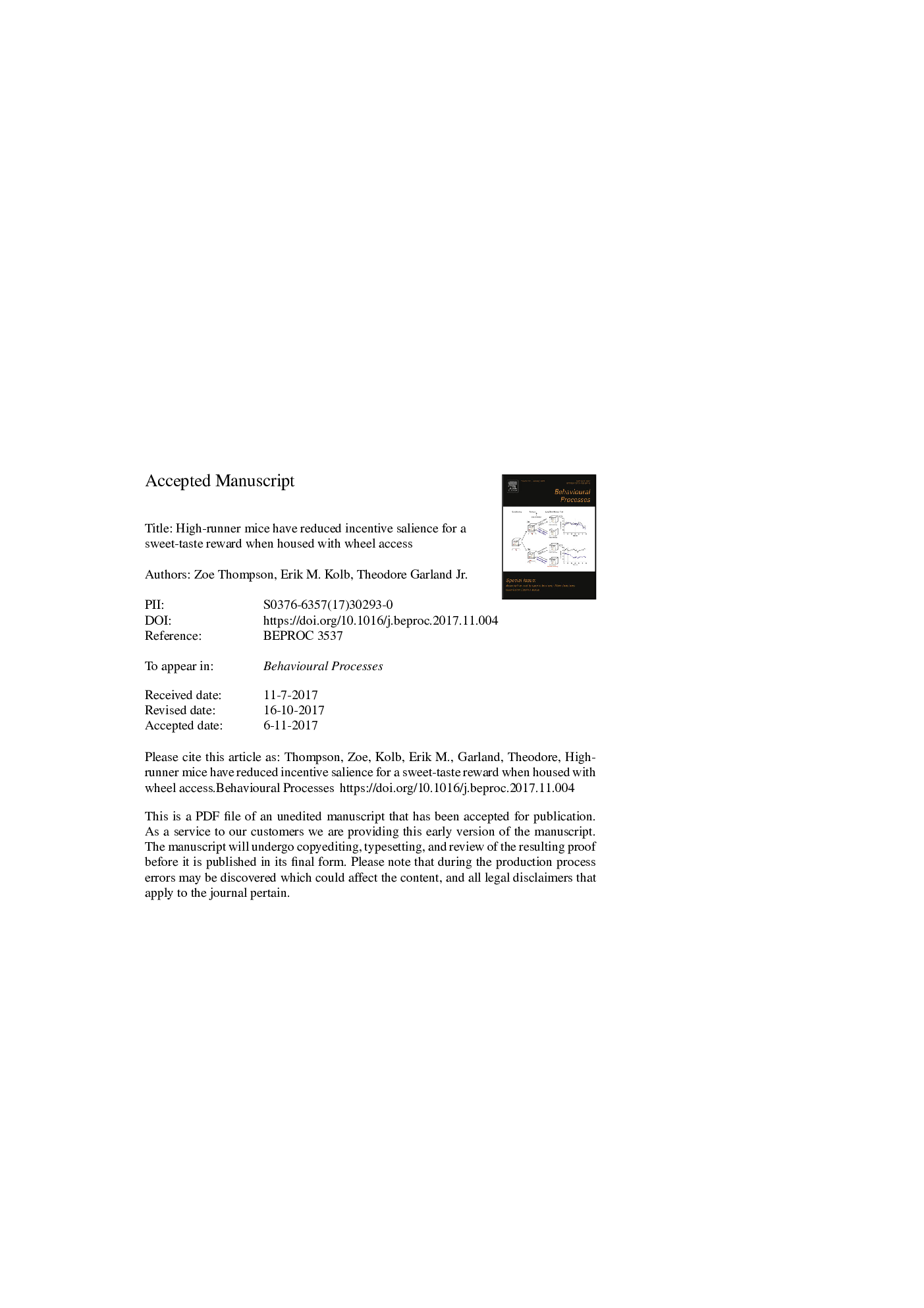| Article ID | Journal | Published Year | Pages | File Type |
|---|---|---|---|---|
| 8497031 | Behavioural Processes | 2018 | 41 Pages |
Abstract
To explore reward substitution in the context of voluntary exercise, female mice from four replicate high-runner (HR) lines (bred for wheel running) and four non-selected control (C) lines were given simultaneous access to wheels and palatable solutions as competing rewards (two doses of saccharin [0.1, 0.2% w/v]; two doses of common artificial sweetener blends containing saccharin [Sweet 'N Low®: 0.1, 0.2% w/v], aspartame [Equal®: 0.04, 0.08% w/v], or sucralose [Splenda®: 0.08, 0.16% w/v]; or two doses of sucrose [3.5, 10.5% w/v]). Wheel running and fluid consumption were measured daily, with each dose (including plain water) lasting two days and two “washout” days between solutions. In a separate set of mice, the experiment was repeated without wheel access. The artificial sweeteners had no statistical effect on wheel running. However, based on proportional responses, both doses of sucrose significantly elevated wheel running in C but not HR mice. In contrast, the high dose of sucrose suppressed home-cage activity for both linetypes. Both sucrose and the artificial blends generally increased fluid consumption in a dose-dependent manner. When they had access to wheels, HR had a significantly smaller increase in consumption of artificial sweetener blends when compared with C mice, but not when housed without wheels. Overall, these results provide further evidence that the reward system of HR mice has evolved, and specifically suggest that HR mice have a reduced incentive salience for some artificial sweetener blends, likely attributable to the stronger competing reward of wheel running that has evolved in these lines.
Related Topics
Life Sciences
Agricultural and Biological Sciences
Animal Science and Zoology
Authors
Zoe Thompson, Erik M. Kolb, Theodore Jr.,
